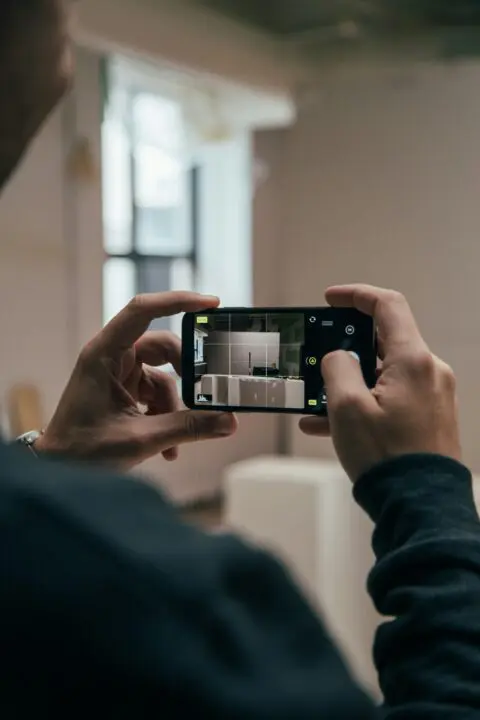As AI use grows, architects should consider risks, rewards, and related liabilities
Nearly everyone agrees that artificial intelligence, or AI, could potentially change the world.
Text
Nearly everyone agrees that artificial intelligence, or AI, could potentially change the world. But there’s still a good deal of uncertainty around how, why, and when this might happen. That uncertainty stretches into architecture, where many firms are grappling with AI’s capabilities and the accompanying risks.
“Just as with any new technology, there is risk involved,” says Damon Leverett, AIA, former senior adjunct lecturer at the School of Architecture and adjunct lecturer at College of Information at the University of Arizona. “Many of the arguments are the same ones that were used when CAD and BIM were introduced to the industry. This has all happened before.”
Leverett, who served as the 2023 president of AIA Arizona, has become something of an AI evangelist, giving numerous lectures on the topic and encouraging architects to embrace AI’s capacity to reshape the profession. He acknowledges that generative visualization tools like Midjourney are captivating designers and prompting questions about incorporating them into existing workflows. But when it comes to getting started, he feels many of the solutions are already here, rooted in practicality.
“Here’s the primary tenet: Licensed architects, engineers, and others involved in our industry are responsible for the content they produce, whether it’s by AI, a spreadsheet, Microsoft Word, whatever,” he says. “We can’t shift responsibility onto a machine; that’s not allowed and never has been. Even if I use AI to create, say, a structural design, I have to review it afterward. Much of it is just common sense. If you treat the virtual world like the real world, you’re more than halfway there.”
“The conversation we’re having with architects now is one of awareness,” says Kevin Collins, design and construction leader and managing director at Victor. “We’re talking about copyright infringement, if they’re using AI technology that pulls in public data that may involve design or specific proprietary components of another firm’s work. Or, on the flip side, if their information is in the public sector and somebody else is utilizing their work and infringing on copyrights, patents, or other elements of their designs.”
Leverett agrees that an early risk in the AI space is using models that have been “trained” on publicly available-but-copyrighted materials. A solution may be to develop a custom training model that only uses a firm’s authorized designs and could synthesize that data to produce newly evolved ideas.
“If you use an AI tool today to generate an image of a design of a hospital, that model might look at every hospital picture on the internet from all over the world,” he says. “But if I use a model that only contains the hospitals my company has designed, and there are 100 of them, that’s your own content. I think that has a huge future because it makes people feel safe, they don’t feel like they’re doing anything risky, and it makes it less likely that we are intruding on intellectual property.”
That said, the risks of AI go beyond infringing on copyrights; it’s also introducing a new era of fraud. While architects might be focused on ways to improve their designs, sophisticated cybercriminals are already replacing easily detected phishing emails with AI-fueled video impersonations of C-suite executives, increasing the importance of cyber protection policies that safeguard a firm’s finances and proprietary information.
“There’s something called whaling,” Collins says, “which is when the CEO or CFO is impersonated and an account representative is asked to send $500,000 to this bank today because we need to pay something. Before, this was more done by email, recreating the email address of the CEO or the language they commonly use. With AI, they’re now able to do it by video; you have AI technology representing the face.”
“It’s increased sophistication in bad actors creating problems for architects on the cyber-related side,” he adds. “So there should be a sense of awareness; they need to look at their risk control process, to make sure colleagues are educated on the issues and how bad actors might get in.”
For now, Leverett and Collins both encourage architects to start wrapping their heads around the bad and the good that AI may bring. Leverett likes to remind his design-centric audiences that its uses will go beyond visualization: “Many of the tools we use—CAD software, photo editing, document development—all of those are starting to incorporate AI. Eventually, everything we touch will have some type of AI component.”
“It’s never too early to start worrying or thinking about this, because the change is exponential,” Collins says. “A lot of the current AI technology is focused on efficiency or presentation; there’s not an all-encompassing solution yet. But tech is improving, and bad actors are improving. Now is not the time to be flat-footed; now is the time to be thinking so that you can be ahead of the curve. The firms that can act on it quickly, or formulate a strategy that’s effective, will have a huge advantage in the marketplace.”
Learn more about cyber liability insurance from the AIA Trust.
More on Artificial Intelligence & Cyber Risk

Navigating Risk in Digital Practice
Contracts ▪ Cyber risk ▪ Firm Management ▪ Professional Liability ▪ Risk report
Cyber Liability Is Real
Cyber risk ▪ Firm Management ▪ Article ▪ Newsletter
Protect Your Firm from Ransomware Disaster
Cyber risk ▪ Firm Management ▪ Article